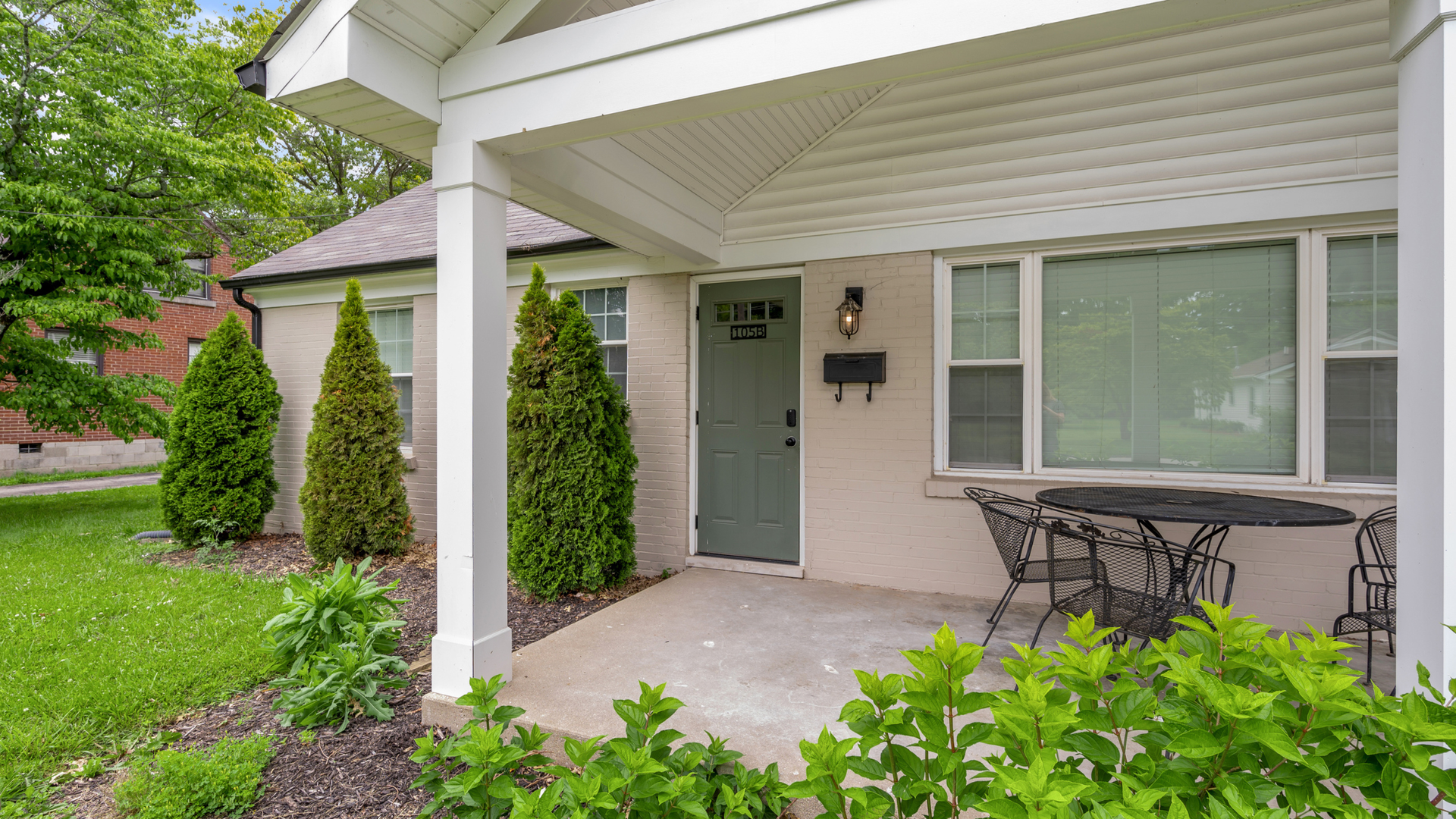What Happens When Crew Housing Gets It Right
Imagine for a moment you’re a crew member 1,000 miles from home. Boots dusty, calls home delayed, that familiar back-yard replaced by someone else’s city.
Now ask yourself: what would you want your company to do for you in that situation?
When we started housing crews we realised that per diem isn’t enough comfort, and “a bed” isn’t a home. What keeps craftsmanship high and turnover low are the small things: quiet clean housing near the site. Reliable Wi-Fi so a parent can say goodnight. A rotation that includes a paid trip home every 6-8 weeks. A stocked pantry. A Sunday grocery run. A gym pass or pickup league to blow off steam. A number to call when the day hits hard.
It’s about trust, reliability, and genuine human care, delivered in the form of a good night’s sleep and a taste of home away from home.
1,000 Miles from Home: The Emotional Toll on Traveling Crews
Being away from home is
part of the job for many construction teams, but that doesn’t make it easy. Weeks (or months) on a distant jobsite can wear down even the toughest crew members. The emotional toll is real: family birthdays and Little League games get missed, routines are uprooted, and a sense of isolation can creep in. Living out of a suitcase in a sterile hotel room or a cramped bunkhouse magnifies that loneliness. Crew members often describe feeling like “guest workers” in someone else’s town, present to work, but absent from their own lives. This strain isn’t just touchy-feely stuff; it directly impacts job performance. A worker who feels disconnected and unsupported is more likely to count the days until they can head home for good. In fact, many young tradespeople quit not because they dislike the work, but because the
lifestyle wears them down. When a veteran superintendent confesses on Reddit that after a couple of years on the road “I couldn’t do it anymore,” citing family stress even with a solid per diem, it’s a red flag to employers. Money alone can’t offset the ache of being far from home in subpar living conditions.
So what’s the
antidote to this emotional drain? It starts with empathy from the top. Forward-thinking companies are asking,
“How can we make life on the road feel less like a punishment?” The answer isn’t an expensive mystery, it’s providing crew housing that recognizes workers as people with needs, not just cogs on a jobsite. That means arranging accommodations where a crew member can have privacy and peace after a long shift, instead of dreading noisy roommates or a long commute from a cheap motel. It means ensuring they can video-call their kids without the Wi-Fi cutting out. It might even mean giving them a chance to fly home for a long weekend after several weeks out, so they return recharged. These gestures send a clear message:
We value you as a human being. When crew members know their well-being matters, trust grows. They become more engaged on the job and more committed to the company. In an industry built on loyalty and word-of-mouth reputation, that kind of human care travels fast.
Small Comforts, Big Impact: How Better Housing Boosts Morale and Craftsmanship
Providing
high-quality housing for construction teams is about enabling crews to perform at their best. Think of the difference a few small comforts can make. A quiet, clean house near the site means your team isn’t burning daylight (and energy) on a 60-minute commute each way. Those extra hours of rest translate into sharper focus and less fatigue on the job. Academic research has linked long, grinding commutes to exhaustion and dips in performance, especially in complex work. By cutting down travel time, near-site housing literally buys back sleep and sanity for your crew. And sleep is no small thing in construction: studies show workers with sleep problems have a
1.62× higher injury risk on the job. In other words, a good night’s rest in a comfortable, quiet room is a safety measure and a quality booster. When crew members aren’t fighting fatigue, they’re less prone to mistakes and more likely to take pride in their craftsmanship. The structures they build are better for it.
It’s not just the commute and the bed, either.
Strong Wi-Fi in housing might seem trivial until you realize it’s a lifeline for staying connected to family. A quick video chat or streaming a favorite show can do wonders for morale after a ten-hour workday. Likewise, a
stocked pantry or kitchen where crews can cook a decent meal beats fast food every night: it saves money and keeps them healthier and happier. Access to a
local gym or fitness pass gives workers an outlet to blow off steam and stay in shape, which improves both mood and long-term health. And those
paid trips home every few weeks? They’re game-changers. Knowing that in a couple of Fridays they’ll be on a flight back home for a long weekend can keep a crew member pushing through the tough days. Each of these touches might seem small, but together they transform “a bed for the night” into
“a home away from home.” Companies that invest in these comforts see the payoff in attitude and output. As one provider observed, investing in employee housing and comfort leads to higher job satisfaction, better retention rates, and a more positive work environment. Simply put, when workers feel taken care of, they take better care of the work.
Housing and Retention: What the Last Year’s Trends Are Telling Us
In the past 12 months, the construction industry’s chatter—from Reddit forums to Facebook groups to trade news—has zeroed in on one truth:
housing matters more than ever in keeping crews happy. We’re in a labor crunch; roughly half a million extra construction workers are needed to meet demand, according to 2025 estimates. With 94% of U.S. construction firms reporting difficulty finding workers, no company can afford to lose good people over something as fixable as lousy lodging. Yet time and again, that’s exactly why folks quit. Scanning social media, you’ll find story after story of crew members walking away from high-paying jobs because the daily grind of living conditions was too much. In a ConstructionManagers subreddit, one traveling super with 15 years’ experience shared his generous comp package – then admitted he walked away because the personal strain was unbearable. Others chime in about per diem rates: “Is $120 a day enough in a cheap town?” The consensus: not when it forces guys to double up in motel rooms or stay an hour from the site. On r/Construction, a recent thread asked about companies that pay for motels
and per diem; the overwhelming response was that
private rooms are now the expectation, and offering only shared rooms is a fast track to losing your crew.
Facebook groups echo the same themes. Job posts for shutdown projects proudly advertise “$115/day per diem
plus housing” in bold letters, because they know it draws more applicants. Seasoned moderators warn newcomers to get the housing arrangement in writing as too many have fallen for a bait-and-switch where a promised apartment turns into a crowded bunk trailer. The fact is,
lodging has become a headline benefit. Recruiters report that crews will jump ship to a competitor that promises better housing or a shorter drive to the job. And it’s not just comfort at stake, it’s stability. Constantly moving from one sketchy motel to another each month because the company chases the cheapest rate is a morale killer. It makes skilled workers feel like vagabonds. The smartest companies are reading these signals and changing how they handle crew housing. They realize their housing policy broadcasts their values every time a foreman scrolls through job listings. As one industry blog put it,
“your housing plan is not a line item. It’s part of your employer brand on every jobsite and in every hiring conversation”. The data backs this up: firms that
proactively provide quality housing are seeing higher retention, while those that don’t are left with unfilled roles and delayed projects. In fact, a recent workforce survey by AGC found that 45% of construction firms had project delays due to worker shortages. A shortage exacerbated when avoidable turnover happens mid-project. The takeaway from all these stories and stats is crystal clear: offering decent housing is essential if you want to keep your team intact and productive.
Building Trust and Loyalty Through Better Crew Housing
Construction has always been a people business. Crews stick with companies they trust, and that trust is built (or broken) by how they’re treated on and off the clock. Providing better crew housing is one of the most tangible ways to show you’ve got your workers’ backs. It signals reliability, that the company will follow through on promises and take care of the details that affect daily life. It also signals respect: giving a skilled tradesperson a private room in a clean, quiet house says “we value your comfort and privacy,” whereas cramming them into a rundown motel says “you’re just a number to us.” One construction veteran put it bluntly: Cramped motels say, “you’re just a number.” Crew-ready homes say, “we care about your well-being.” That message of respect and care builds loyalty far more than an extra dollar per hour ever could. When workers feel genuinely cared for, they reciprocate with extra effort and commitment. They’ll go the extra mile to meet a deadline or solve a tough problem because they’re invested, not just in the project, but in the team and company that invests in them.
Ready to turn “a bed” into a true home-away-from-home for your traveling crew?
Hard Hat Housing is here to help you give your construction team the comfort, stability, and care they deserve on the road.
Reach out to learn how we can make crew housing seamless, so you can focus on building, while we handle the rest.













